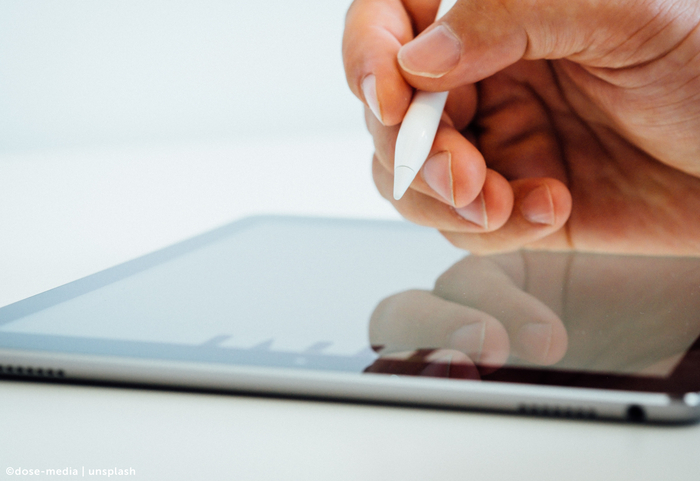Together with a research team from the Fraunhofer IML, our company has started work in the development project "Digital waybill (e-waybill)" on 01.04.2021. The aim of the project is to implement a digital service that enables the generation, storage and further processing of digital waybills for national and international transport. Christian Hammacher, COO Road of NOSTA Logistics GmbH, and Thore Arendt, Head of Project & Innovation Management of NOSTA Holding GmbH, report in an interview on the background and progress of the project.
Annika Blom [AB]: Who is involved in the research project on the e-waybill and how did it come about?
Thore Arendt [TA]: The research project on the e-waybill is part of the Fraunhofer IML's Silicon Economy research platform. There is a direct exchange between the responsible department of Fraunhofer IML and us. The background to the project is that Fraunhofer IML was looking for a partner to test the e-waybill in practice.
Christian Hammacher [CH]: Various colleagues from different operational units of the NOSTA Group are also involved in the project to contribute their knowledge. At the latest during the test phase, NOSTA Group employees will also be involved in a hands-on way to test the solution in reality.
[AB]: When did the cooperation project start?
[TA]: The first talks took place at the beginning of the year. The project officially started on 01.04.2021. It should also be completed within this year.
[AB]: A step towards the digital future of road transport? What advantages does the e-waybill bring with it?
[CH]: In my opinion, the name of the e-waybill comes up a bit short. Digitising the waybill is not enough, both for process optimisation at our company and for our clients, because we know from our daily business: there are a lot of other documents that have to be given to the drivers in paper form, because original signatures, neutral delivery notes or customs documents are needed. The goal is to create a framework or ecosystem with the e-waybill that takes into account all the accompanying documents that are needed by our clients, the loading points or our clients' customers. Once all these documents are digitised, all parties involved in the transport chain benefit, as it can reduce manual effort and error tolerances and massively increase speeds.
[TA]: The digital waybill note is a manifestation that is also of great interest on a government level. If a digital version were to become obligatory in the future or if certain regulations were to come into force, we are the users who would already fulfil the prerequisites and have helped to develop it. That is one of the reasons why we are involved in this project. Another reason is that we achieve scalability through a digital document folder. From a digital delivery note to a digital waybill, everything is possible.
[AB]: What challenges or special features have to be considered in the development of the e-waybill?
[CH]: One challenge arises from the complexity and the question of how comprehensive the solution should be. We have to strike the right balance between covering 80 per cent of the standard cases and not putting unnecessary effort into covering edge cases, but still creating a comprehensive solution that can be used by everyone. Together with the Fraunhofer Institute, we must succeed in developing a solution that is freely available and promises real benefits to all.
[TA]: From a practical point of view, one challenge is to work towards a change in thinking. The paper-based approach has become established, and in some cases stamps and signatures are explicitly requested by customers. The right dose of usability and legal compliance needs to be achieved. The development is a longer path that has to be taken, but if a solution is established and it is possible to map uniform documentation in digital form - perhaps even across all modes of transport - we will quickly reach a point where the process is greatly simplified.
[AB]: What are the next stages of development and project phases?
[TA]: Well, the Silicon Economy project is not organised like a classic project. As a participating company, we have the opportunity to participate in the implementation and use it after development. The idea is freely available to the market afterwards.
The kick-off workshops with the Fraunhofer IML project team started recently. The project team, which consists mainly of programmers, has a clear idea of what tasks the solution should fulfil and what the whole thing should look like, and they take a very iterative approach to developing it. That means they keep coming back to us, asking questions and developing the software solution based on them. In autumn/winter they present their results to us. The solution is also presented to the Ministry of Transport, which is involved in the project as a sponsor. If the solution meets with approval, it will go into a test phase, which will most likely take place at the end of the year.
[AB]: Are there any preliminary considerations or plans for implementation at NOSTA Group?
[CH]: As soon as we have something presentable in hand, we will talk to our clients and look for pilot customers. We also know that the topic is relatively complex, because of course our customers will also have to talk to their customers again for a later test phase in order to replace the aforementioned original receipts, delivery notes, pallet notes etc. with digital solutions. I am confident that we will succeed in this together with our clients.


